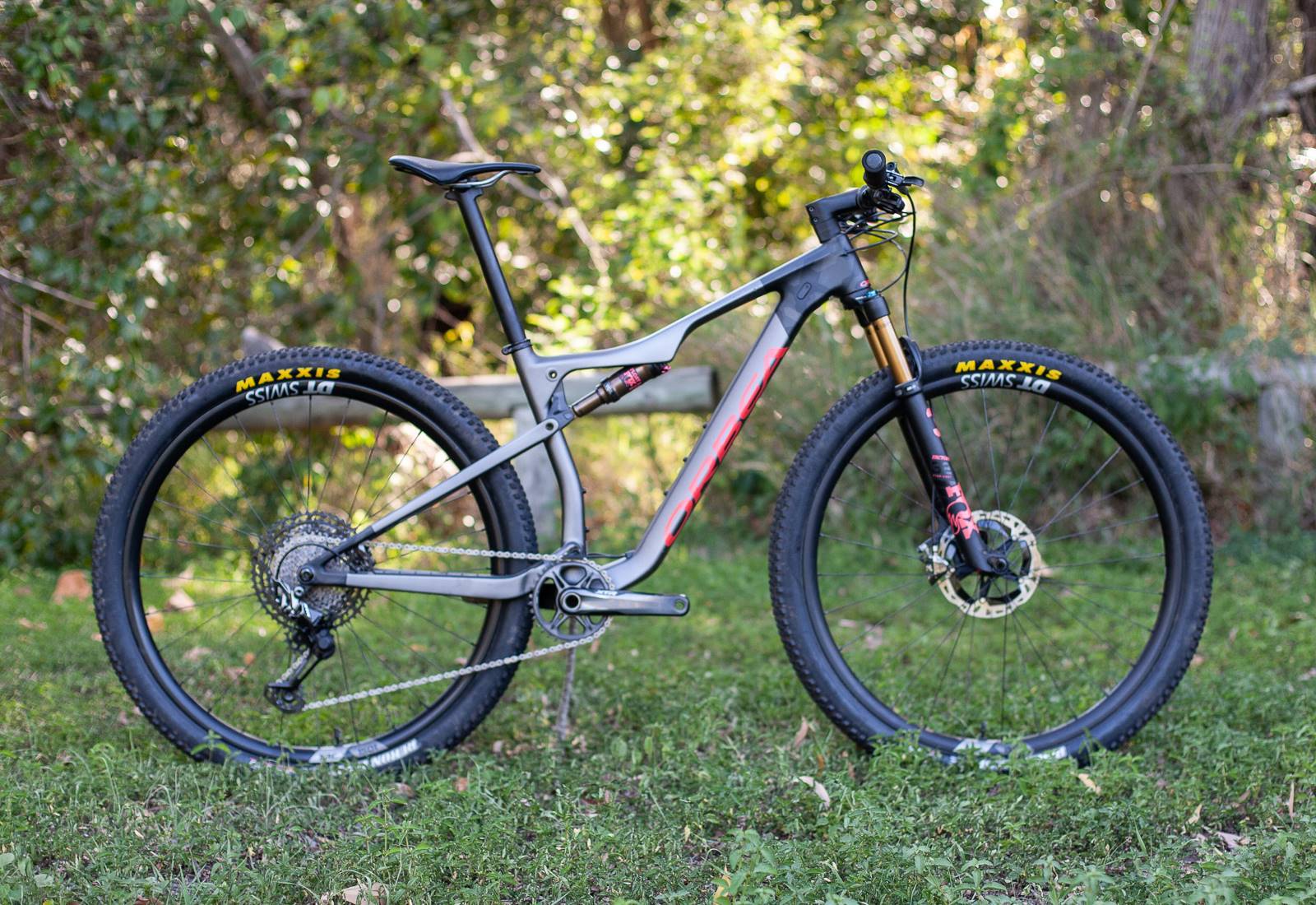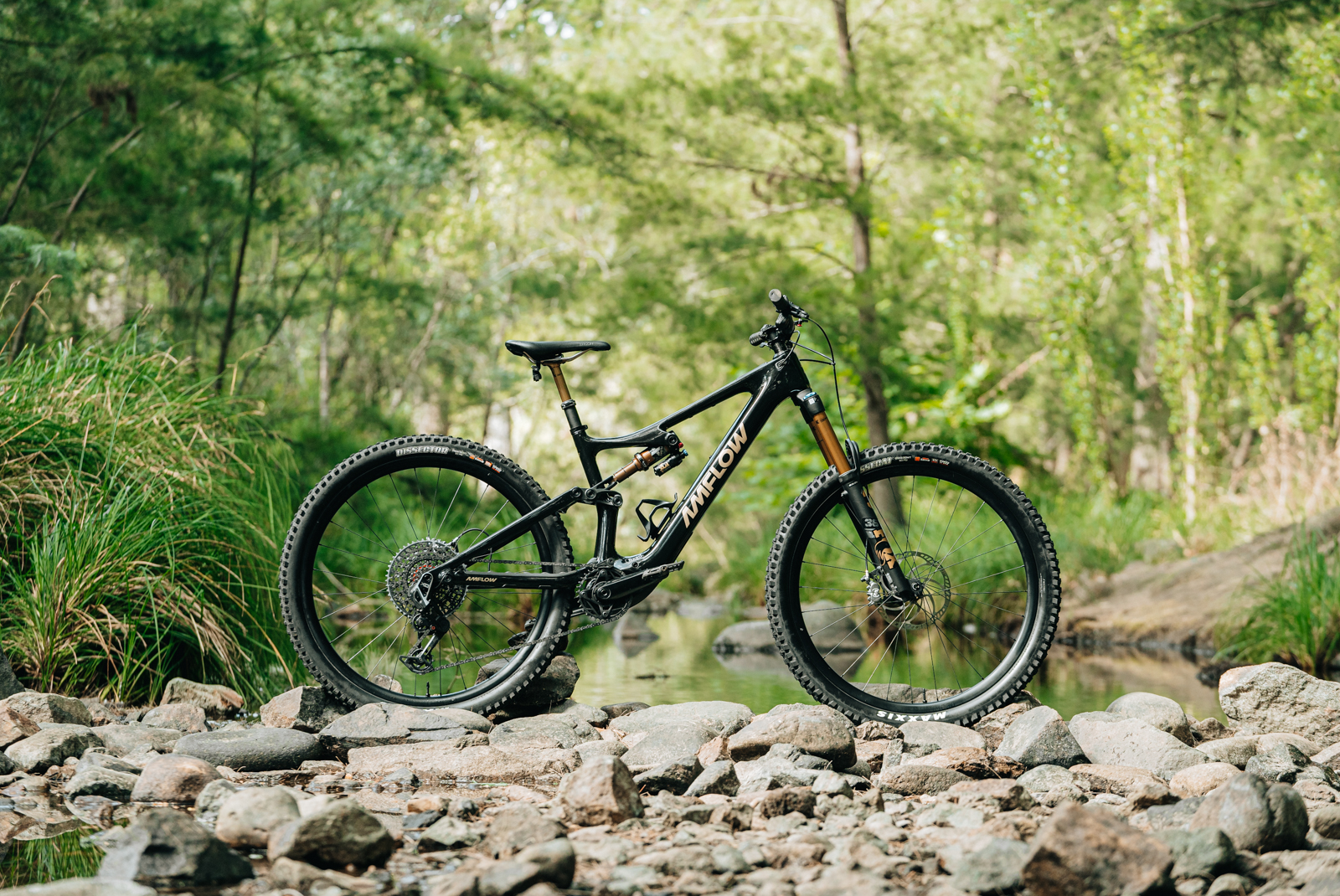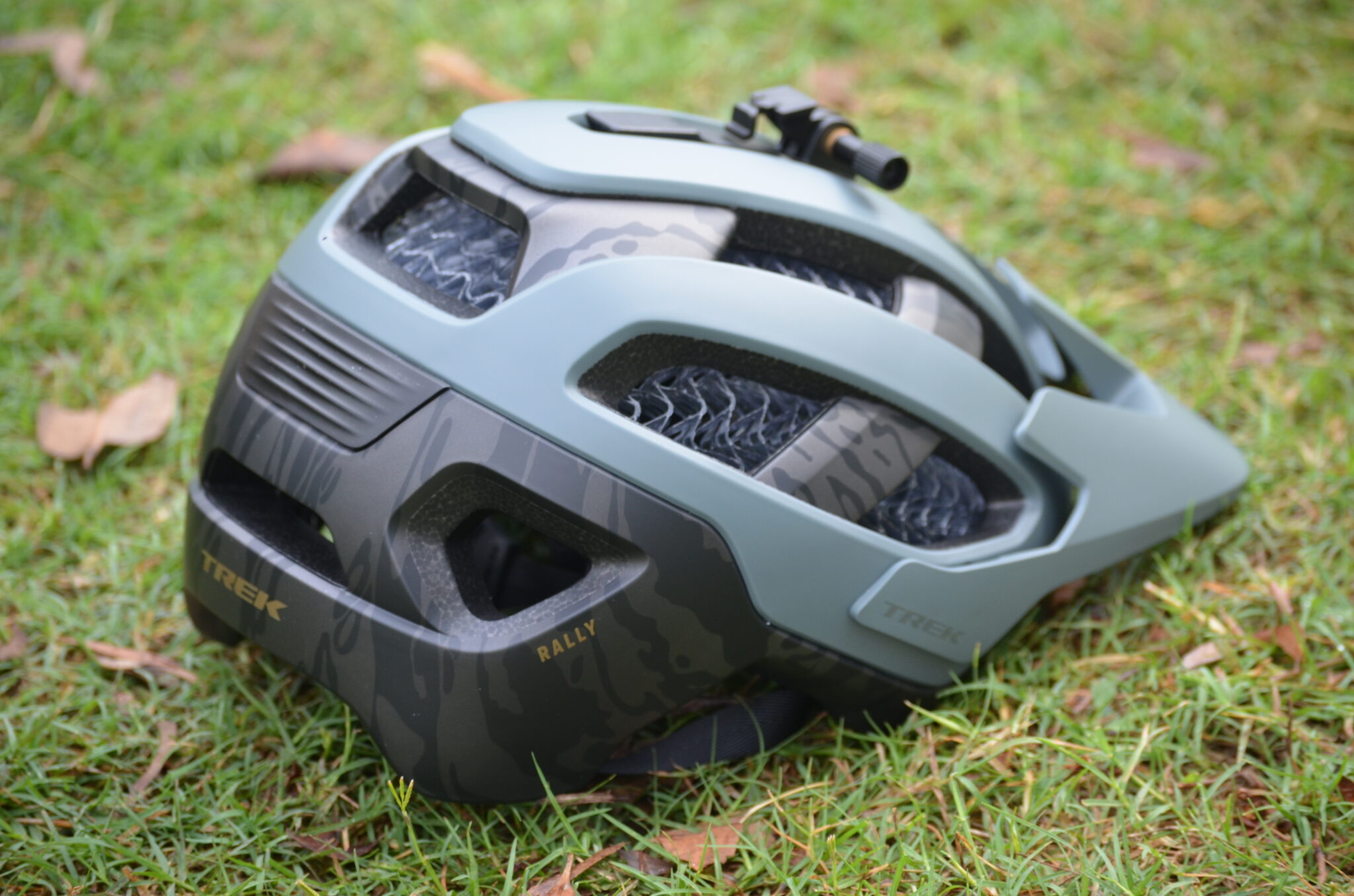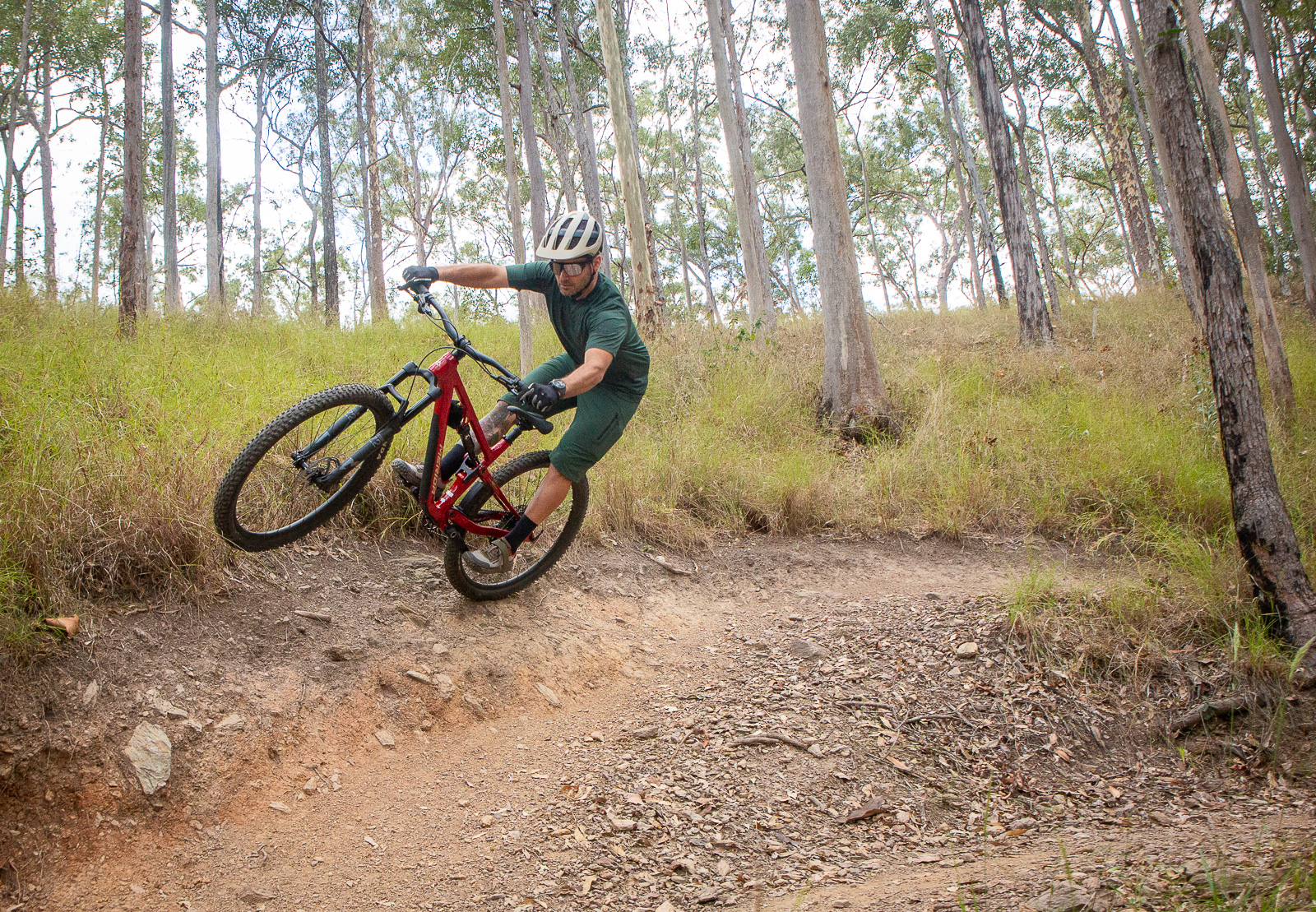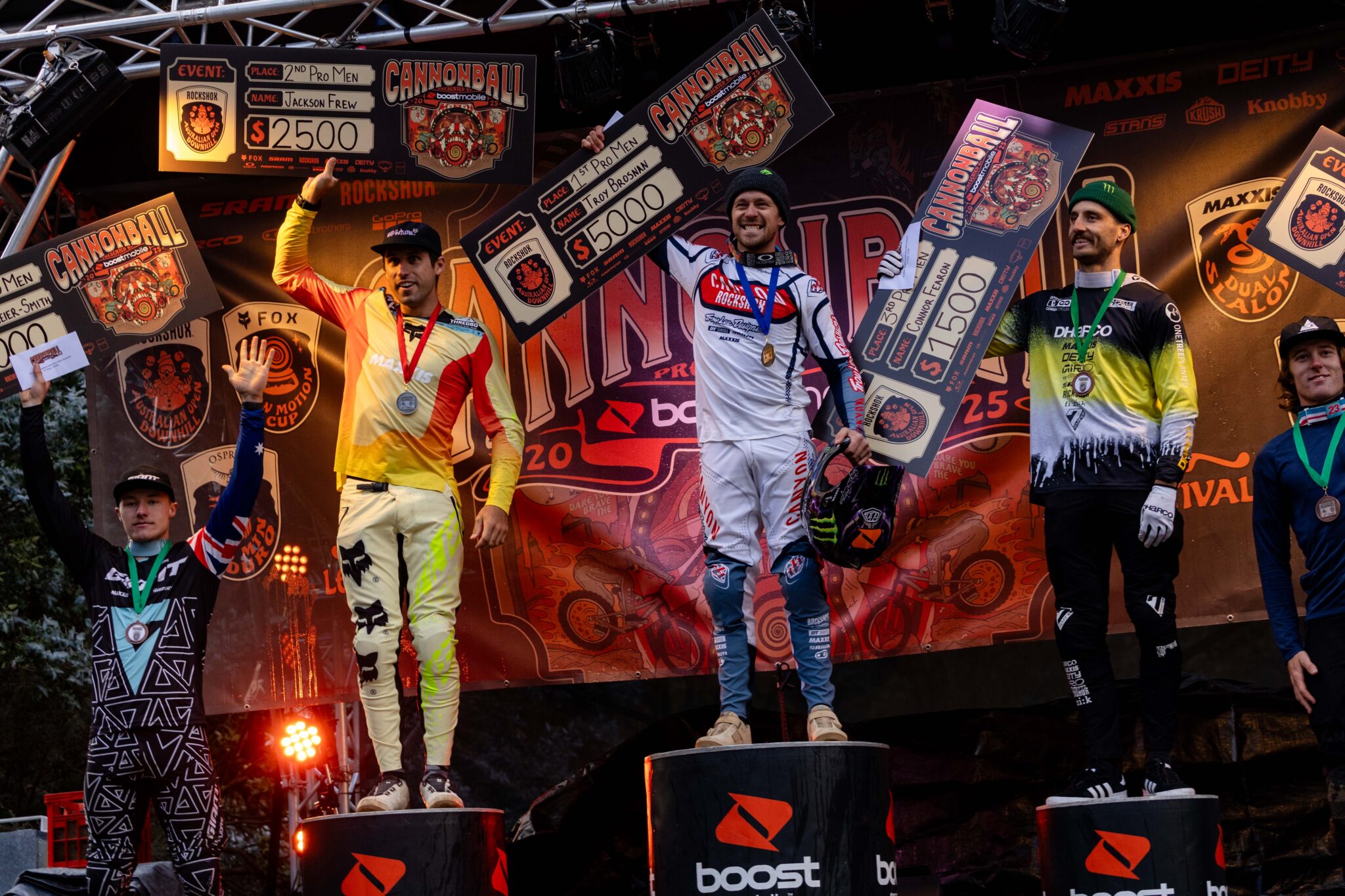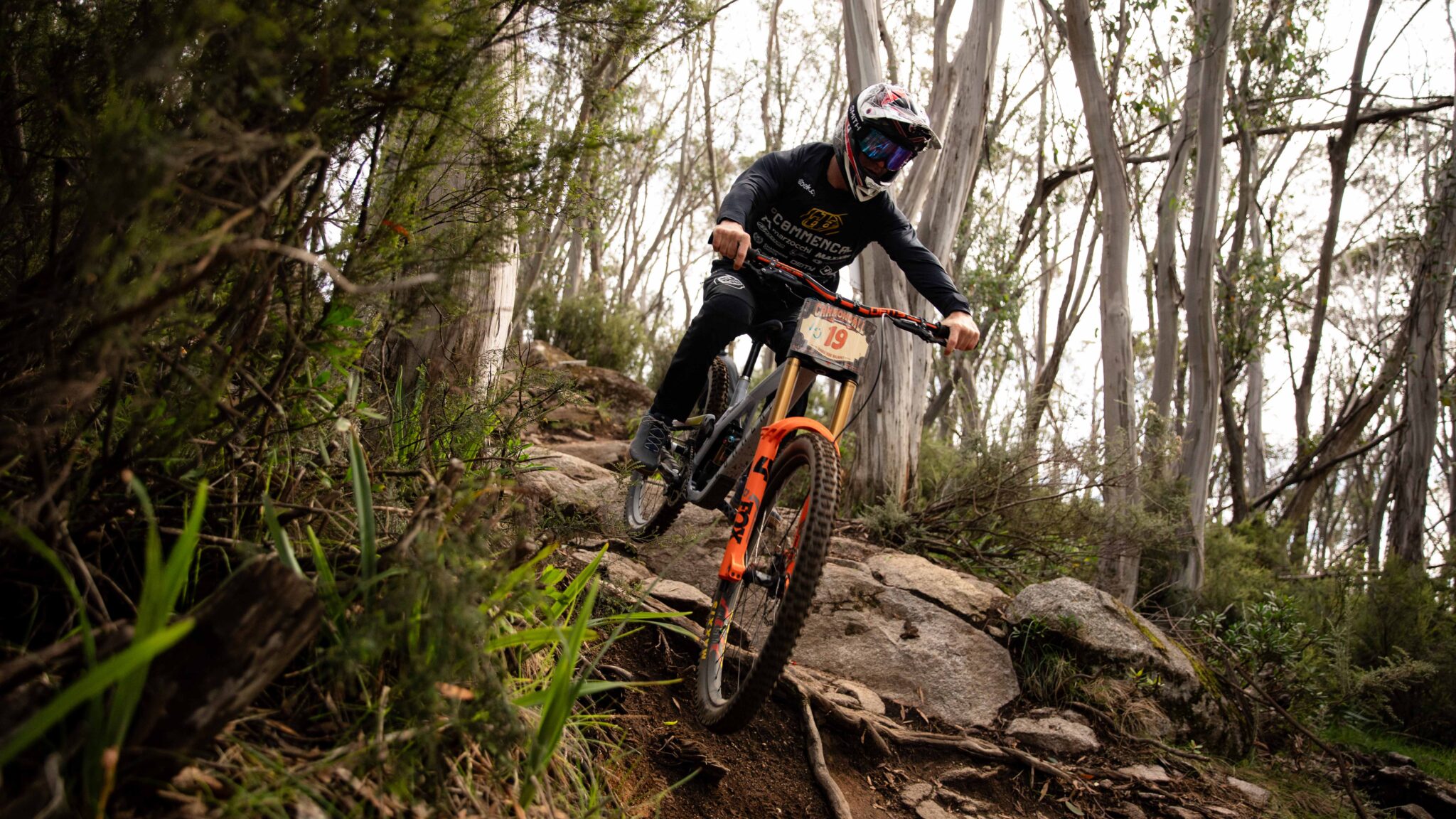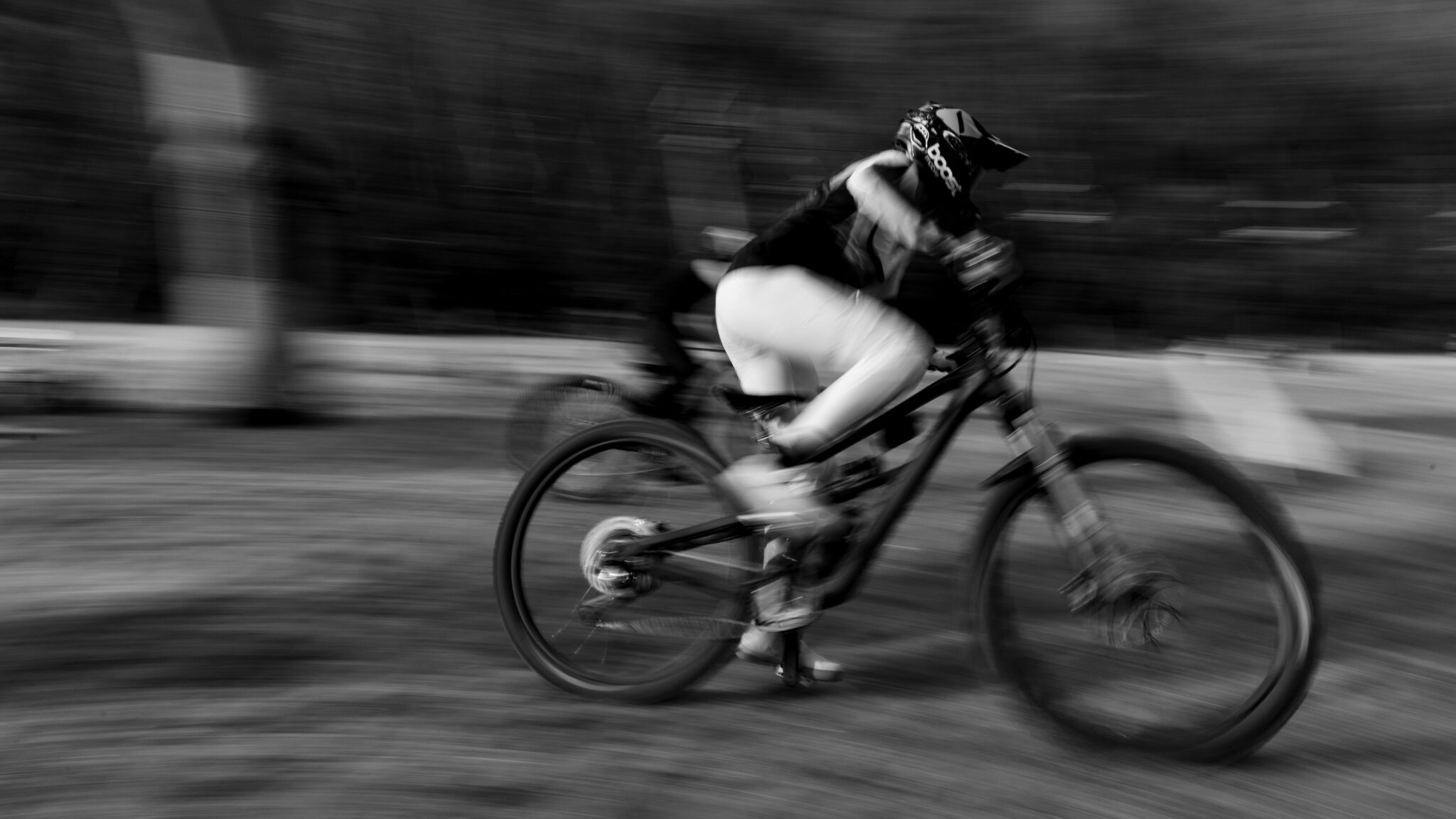TESTED: Orbea Oiz M Team
Orbea may no longer be a gun manufacturer, having shifted from rifles to bicycles about 90 years ago. But that's not to say they don't produce weapons for the trails.
Looking back at the Orbea bikes we have tested here at AMB, each one hits the purpose with lethal precision. Their Occam is a super-versatile trail bike, the Rallon is a big-hitting enduro rig, the Wild FS is an ideal big-travel eMTB, and we cannot wait to ride their new Rise lightweight eMTB. The Oiz (and the Alma) are yet to grace the AMB test shed, but there was a lot of anticipation when it was confirmed that the Orbea Oiz M Team would arrive for testing.
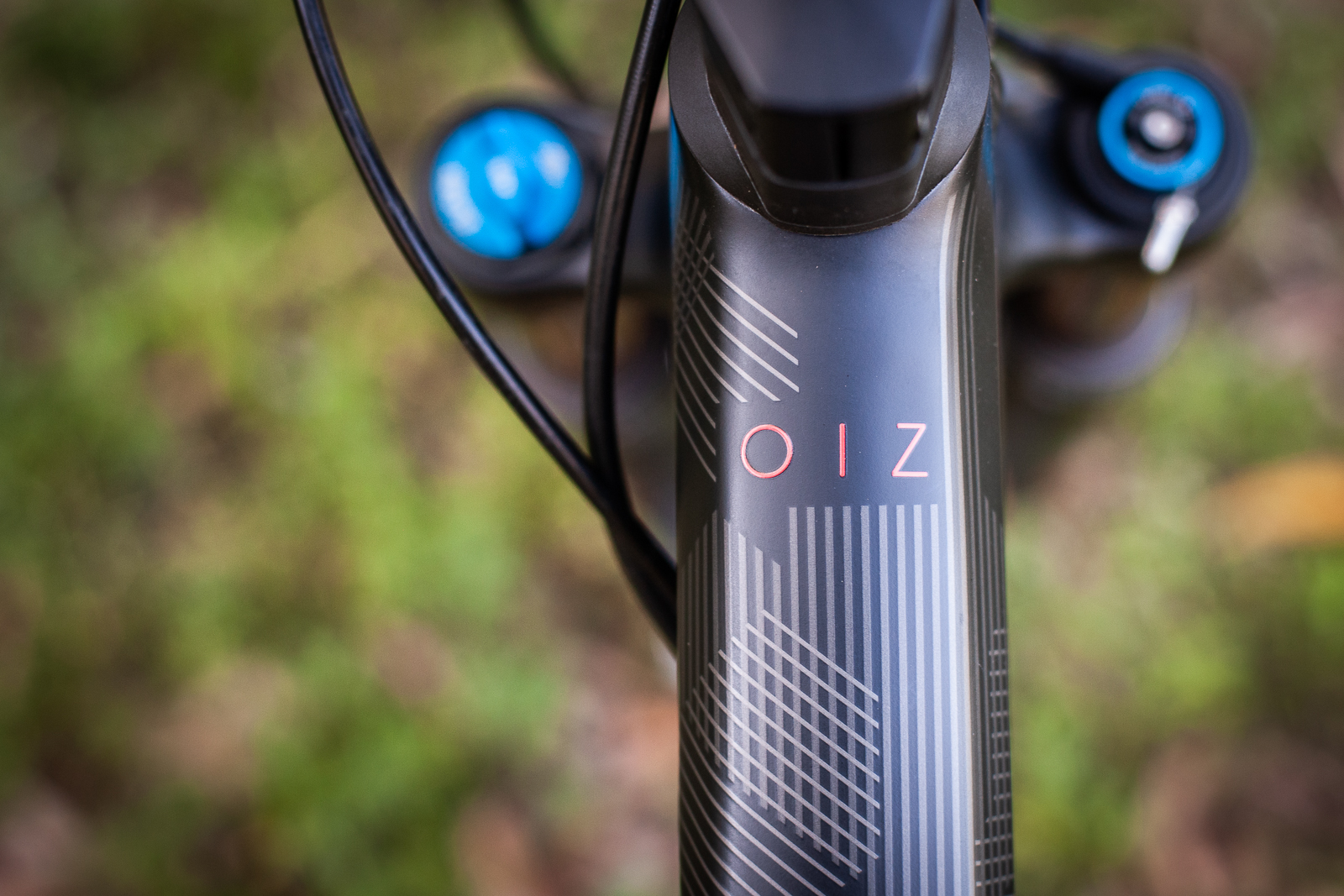
The Oiz is Orbea's all-out cross-country full-suspension bike, and you will find this frame under speedy Aussie riders like Sam Fox, Holly Lubcke and Adrian Jackson. The Oiz was overhauled a couple of years ago in the OMR format, but now the OMX version is here, which is essentially a change to the back triangle of the bike, making the chain stay 430mm long, down from 435mm, on the 29” wheeled bikes. It's worth noting that the small size Oiz is still available in 27.5” as well – otherwise the rest of the range is 29”.
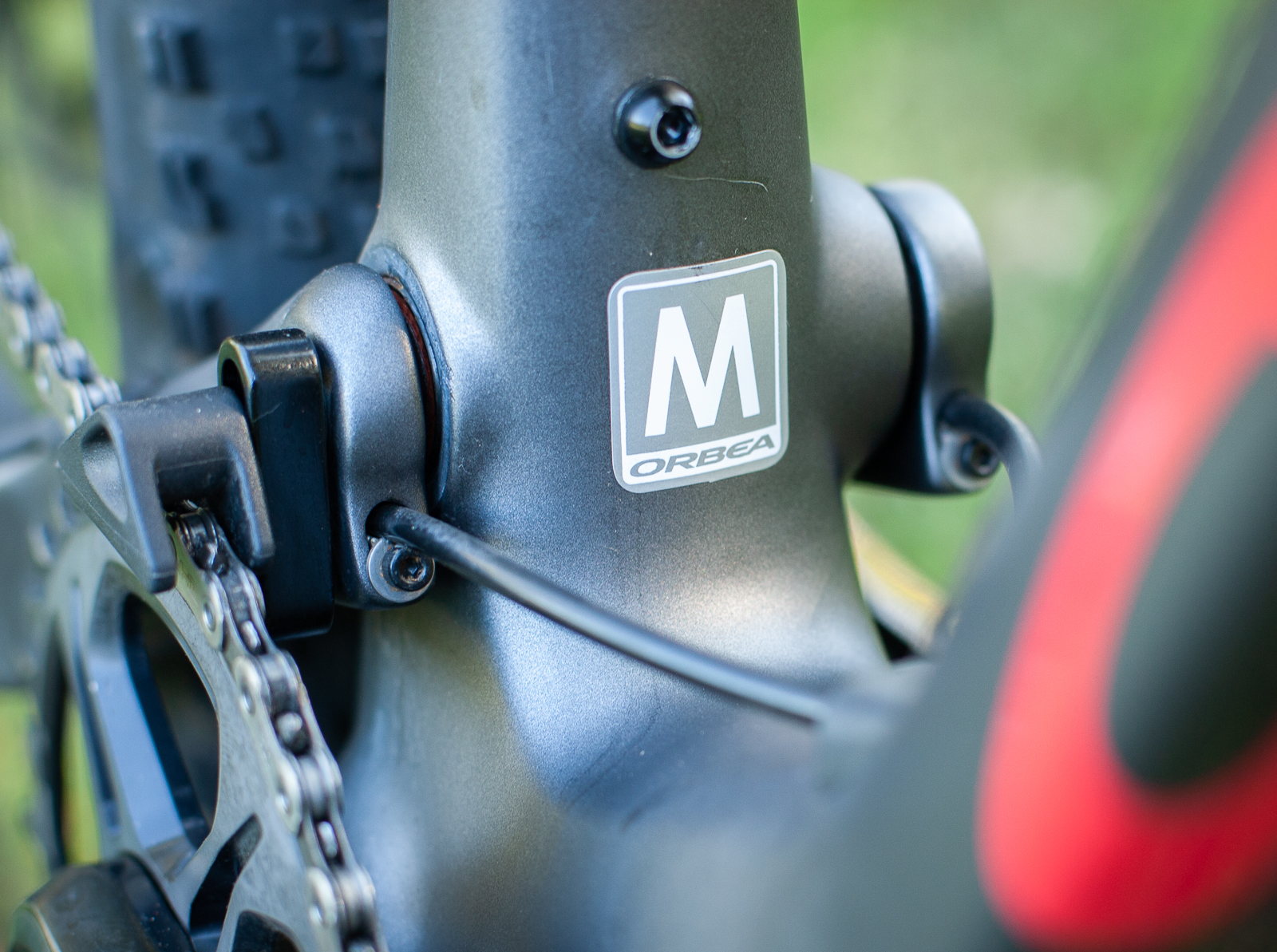
Initial Impressions
The Orbea Oiz M Team looks to tick a lot boxes for a rider wanting an all-out cross-country and marathon race bike. The bikes have a short head tube to assist with low bar height, and that is matched to a 69 degree head angle and 44mm offset fork. The 75 degree seat angle keeps you over the pedals, and the reach on our medium is 435mm. It's a bit shorter than my own bike, but the overall distance to the bars is similar as the Oiz is designed around a slightly longer stem. There's room for two bottle cages on the M, L and XL sizes, and the I-line Fox rear shock has a custom tune for the Oiz, as well as having the lock out cable on the top of the shock while the rebound stays below – helping create a more weatherproof arrangement on the frame, and one that's neat and gives more clearance inside the main triangle as well. All the cable routing is internal, and it's quiet. The Oiz has clearance for 2.4” tyres, and the carbon rear end of the frame has no drop out pivot. Instead, Orbea use the flex of the carbon to mimic what a Horst link pivot would do, just with less weight, less lateral flex, and less maintenance. They also use a flat mount brake mount so that flex point can do its job. Replacing drop out pivots with a flex stay is becoming quite common in full-suspension designs, even being used on the latest Specialized Stumpjumper trail bikes.
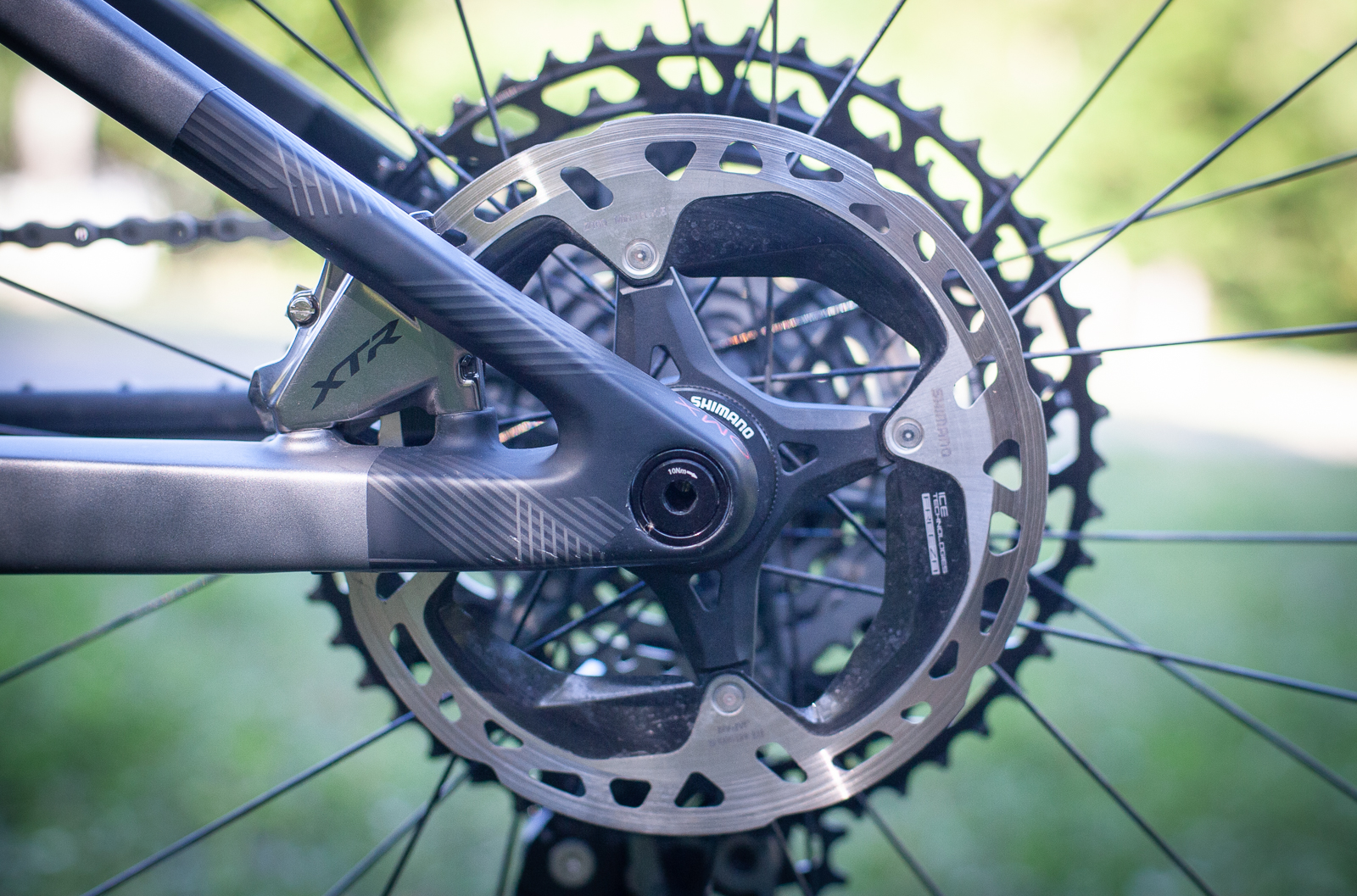
Just when you think the Orbea Oiz targets World Cup domination and reigning supreme in your local club races – there is the small detail of the TR (trail) spec. As is typical with Orbea and their MyO customisation program, not only can you customise the paint colour of the graphics and frame – but you can also change the parts spec on a few specific items to make a whole new bike. The TR spec subs in a Fox 34 Step Cast fork with 120mm of travel, a dropper post, and a different stroke rear shock to deliver 120mm of travel. With this option, the Orbea Oiz is playing in a competitive arena for XC bikes that can offer a little more, and it’s playing at the top of the field. For example, the latest Norco Revolver can be equipped as 100mm or 120mm, but it can only carry one bottle and the 100mm variants are no longer available in Australia. The Merida Ninety-Six RC and Momsen Vipa Ultra have options with 120mm forks and carry two bottles in the main frame – but there is no scope for changing the rear travel. The Canyon Lux can have 100mm or 110mm forks and can take two bottle cages – but it's stuck at 100mm out the back. Then of course there's the Specialized Epic and Epic EVO, but those are two different bikes, not one that can change character.
On the Trail
The Oiz is a thoroughbred; a greyhound: with each generation of R&D Orbea have shaved weight and optimised the geometry and handling of their bikes. Throw a leg over the Oiz and you immediately sense the race pedigree that’s seen the bike atop podiums around the world. It’s an aggressive XC style cockpit: stiff, sharp, responsive. The Orbea OCS stem and bars offer up a rock solid sense of the trail and firm guidance, with the stock stem length suiting the fit I needed straight away. It’s likely that for most riders the 760mm Orbea OCS bars will be a bit wider than race spec, but they were well-suited to trail riding with heaps of leverage to tip into the corners, and they’re easy enough to cut down to preferred width anyway. Overall, the cockpit provided very satisfying stiffness and control which, paired with the shortened 430mm stays meant the bike whipped out of tight corners carrying speed with ease, and felt stiff and sure-footed down fast and rough terrain, like eroded gullies or rock gardens.
The Oiz is earning a name for itself in slightly-left-of-field place – in its suspension management. Serious XC racers will not go without some kind of remote suspension lockout and will be flicking through suspension settings dozens of times every lap to wring every bit of momentum on offer from the trail. The Squidlock, a three-position lockout system, has unlocked (so to speak) new potential in dual suspension settings by offering an intelligent mid-position – and this means new potential to go faster. Ergonomic, elegant, and intuitive to use from the first ride, the Squidlock’s first and third positions are straightforward – open and closed. The middle position leaves the front fork open and increases the compression damping on the rear shock. The setting is fantastic in flat or uphill singletrack that you ride seated and technical climbs, where you need the additional traction from the rear shock and responsiveness of the front suspension as you hit roots and rocks, or surge over step-ups. It means the bike’s geometry is optimised at every turn too. The reduced compression in the rear means you’ll sit a little higher and a little more forward into the bike, keeping your weight centred for optimum traction and front-wheel manipulation. What’s it like in practice? I took the Oiz over a bunch of technical pinches that I usually hit or miss at a 50:50 ratio and cleaned them 100 per cent of the time. Incidentally, if you’re looking to upgrade your own three-position fork and rear shock, the Squidlock is available after market from your Orbea dealer, and there's an option to add an over the bar dropper lever to the same mount.
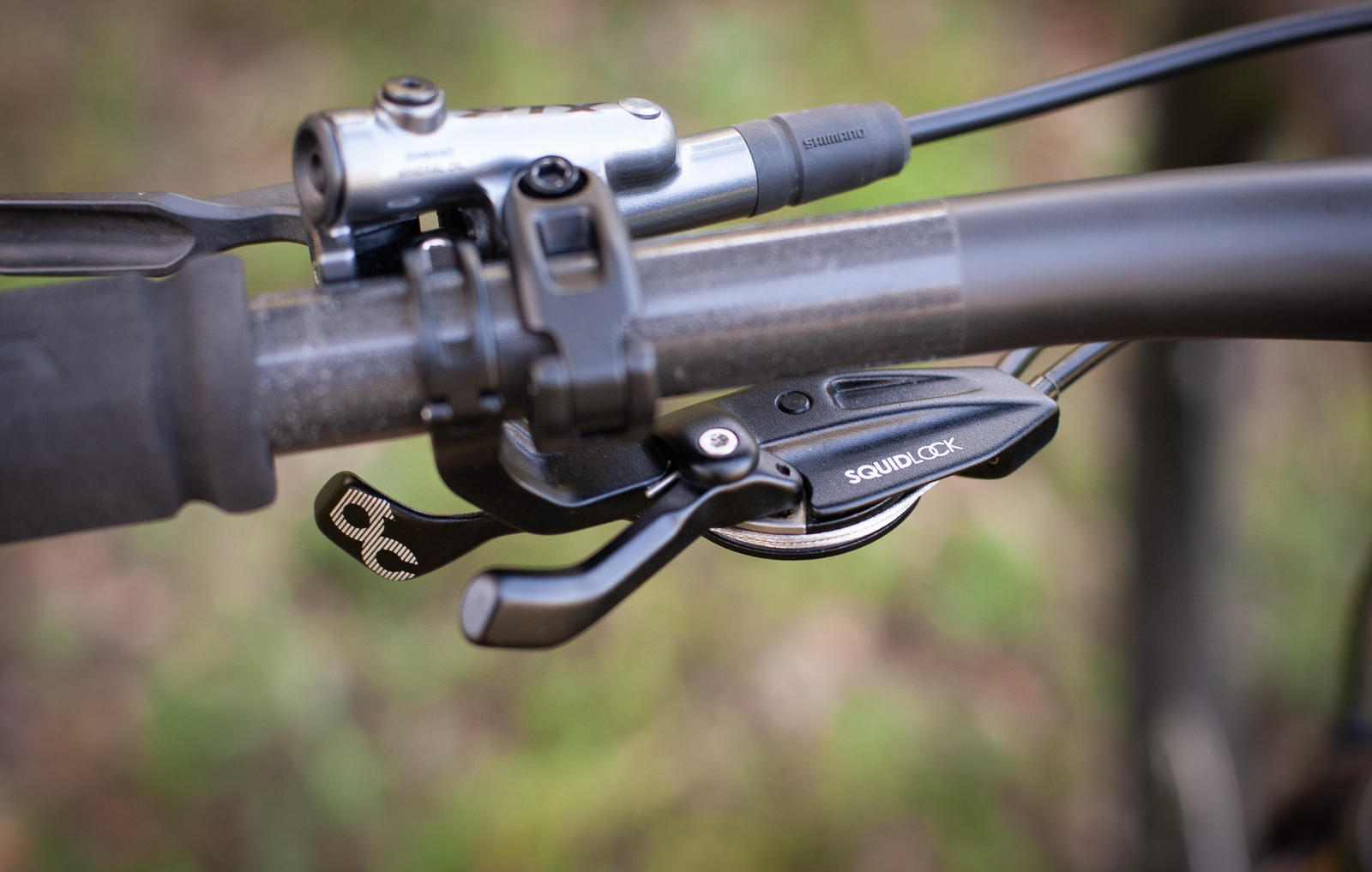
Weight, as we all know, is a huge factor in uphill success and the Oiz certainly is specced to savage the climbs. With an out-of-the-box (pedal-less) weight of just 9.83kg, if you get dropped on the start loop you’ll only have yourself to blame. While the XTR and Fox spec are about as mint as they come, there remain a few scattered opportunities to shave further weight by, for example, swapping out the seat for an insanely light model (something you can explore through Orbea’s MyO site, but more on that later), cutting down the bars, screwing in a bunch of titanium bolts and fussing with your tyre choice (although the Maxxis Rekon Race 2.35” will be a top choice for any serious racer).
While we’re on the Rekon Races, the tyres performed great on the loose pea gravel we tested on, with enough side knob happy to hook up under aggressive cornering despite the dry and loose conditions – with the EXO casing I was able to run these at 16 and 17psi front and rear, providing plenty of additional springiness and making sure the lugs were really sinking into every bit of solid ground they travelled. They're a perfect match with the DT Swiss XRC 1501 30mm rims, which have the new Ratchet EXP hubs and wide and strong carbon rims. Rubber setup is evolving fast in the XCO world, with wider rims and tyres becoming the norm on the World Cup circuit. Many top riders are running 30mm rims with 2.4” tyres to increase the volume and contact patch – less pressure = more grip. I look back and shake my head now when I remember pumping my 2.0” Hutchinson Python Gold 26” tyres up to about 35psi when I first started racing (alloy rims, tubes, etc.). Of course, we all know these days that optimal rolling pressures are much lower than once thought, and narrow isn’t necessarily faster either.

There’s a glaring omission in the Oiz spec that requires some reflection: the absence of a dropper seatpost when, in this day and age, nearly all top XCO racers are using them (even Nino). Of course, a top spec, short travel dropper will add a few hundred grams to a bike, so it could well be that it was omitted to keep the weight below the magic 10kg mark. Having run a dropper on my own bike for a few years, I was actually amazed to discover how little I needed one once I didn’t have one. I was surprised, for example, to score a few Strava PBs on some technical descents despite the slightly-more-awkward handling that a highpost position entails. But there’s a bit more to this story. The standard spec on high-end Orbea bikes are really put to the market as a series of suggestions, and anyone purchasing an Orbea can go online to the MyO site to see what customisations are available for various parts, and in the case of the seatpost this includes the OC2 Dropper 31.6mm 125mm OR 150mm travel for an additional $163 AUD, or the Fox Transfer Factory Kashima Dropper in 125mm or 150mm for an additional $409 AUD. Other specs that can be customised include the saddle, fork (or fork and shock) for longer travel versions, and front axle, for whether you want bolt up or the standard QR15 for tool free wheel changes in the pits.
Our Take
The Orbea Oiz is a pure XC race bike with the option to diversify to downcountry spec, and thanks to the innovative Squidlock Orbea lets you optimise every bit of travel for every bit of trail. The downsides of this means that the Orbea is seriously racy and pricey, and subbing in a dropper will add to the price tag. While you might be able to extend the realms of the Oiz with the TR spec with a 120mm fork and an internal tune for longer stroke on the rear shock – it will still be an XC bike at heart, not a short travel trail bike. This does suit stretching its legs for a slightly wilder stage race though, if you have intentions of events like BC Bike Race.
Photographer: Mike Blewitt
Tester: Imogen Smith
Riding Experience: Half her life on a bike, multiple National team rep for XCO and XCM World Championship events.
Generally Rides: Norco Revolver FS, Norco Revolver HT
Height: 171cm
Weight: 54kg
Bike Test Track: Bunya, Iron Bark, Brisbane Alps
The Oiz is perfect for a devoted racer who wants the best equipment available. It offers the options to loosen up in the offseason if you have the tools, parts, and the time to switch things around. While $10999 is top dollar, you get top quality throughout the bike, and compared with other top model XC rigs on the market, it’s very reasonably priced. Perhaps most telling is that after just a couple of rides on the Oiz, I was interested in how I could make one my own. If I did, I'd add a dropper via the MyO process and go to town with the colour scheme to have something truly unique.
Find out more on the Orbea website.

RRP: $10999
Weight: 9.83kg (medium, without pedals)

